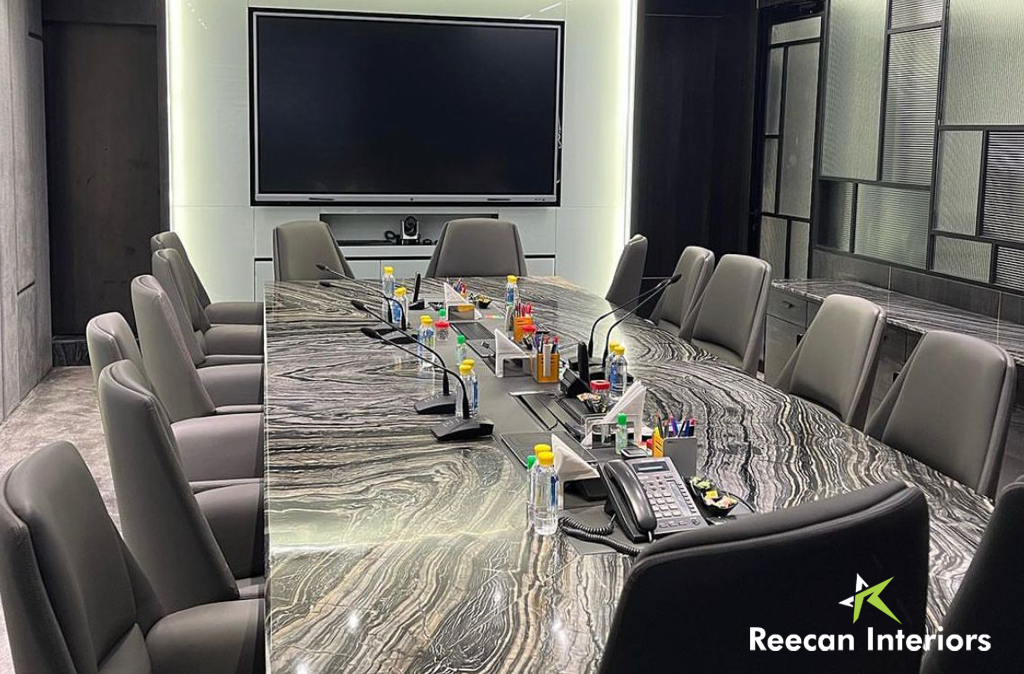In today’s fast-paced work environment, particularly in bustling cities like Delhi, creating a minimalist office interior is becoming increasingly important. Minimalism is not merely about a lack of items but rather about intentionality in choosing what to include in your workspace. With the right approach, a minimalist office can boost productivity, enhance focus, and promote a sense of calm among employees. Here are some key strategies for achieving a minimalist office interior design in Delhi.
Table of Contents
Toggle1. Embrace Open Spaces
One of the fundamental principles of minimalism is utilizing open spaces effectively. In a city like Delhi, where office space can often be limited, it’s essential to create an environment that feels spacious and uncluttered. Consider adopting an open floor plan that promotes collaboration while allowing plenty of room for movement. Use furniture that facilitates open communication, such as communal tables or lounge areas, which can help eliminate overcrowding and encourage a sense of community.
2. Choose a Neutral Color Palette
Color plays a significant role in the overall ambiance of an office. For a minimalist interior design, opt for a neutral color palette. Shades of white, grey, and beige can create a clean and serene environment that reduces distractions and provides a blank canvas for creativity. Additionally, accent walls in muted tones or strategically placed artwork can add personality without overwhelming the senses. This approach not only enhances the aesthetic appeal but also contributes to a more calm and focused atmosphere.
3. Select Functional Furniture
When designing a minimalist office, every piece of furniture should serve a purpose. Select functional and versatile furniture that can accommodate various needs without cluttering the space. For instance, choose desks with built-in storage solutions, ergonomic chairs, and multipurpose tables. These ensure that essential items are easily accessible yet neatly tucked away, helping maintain an organized environment. Furthermore, invest in high-quality furniture that offers durability to withstand the demands of daily use.
4. Incorporate Natural Elements
Integrating natural elements into your office design can enhance the minimalist aesthetic while promoting well-being among employees. Use plants to bring life to the workspace, improve air quality, and provide a touch of nature amidst the urban landscape of Delhi. Consider using simple planters with greenery that complements your office décor. Additionally, natural materials like wood, stone, or linen in furniture and accessories can add warmth and texture, making the space feel inviting without losing its minimalist essence.
5. Limit Decorations and Accessories
A common misconception about minimalism is that it involves stripping spaces bare. However, intentional decoration is an important aspect of minimalism. Rather than overcrowding the space with various decorations, focus on a few meaningful pieces that reflect the company’s ethos and vision. A single piece of art or a carefully chosen sculpture can serve as a focal point, enhancing the overall design without creating clutter. The key is to balance aesthetics with functionality.
6. Optimize Technology Use
In a digital age, minimizing physical clutter can be achieved through technology. Encourage the use of digital tools and cloud storage to reduce the reliance on paper and physical documents. This not only streamlines workflow but also creates a cleaner workspace. Opt for sleek tech gadgets that blend seamlessly with the minimalist design rather than bulky equipment that intrudes into the visual space.
7. Promote a Decluttering Mindset
To fully embrace minimalism, fostering a decluttering mindset within the team is essential. Encourage employees to keep only what they truly need and to maintain a tidy work area. Regularly scheduling decluttering sessions can help ensure that desks, shared spaces, and storage areas remain organized. By promoting this culture, everyone contributes to a clean and minimalist working environment, which can, in turn, enhance overall productivity.
Conclusion
Creating a minimalist corporate office interior in Delhi is a reflection of thoughtful design and intentionality. By embracing open spaces, choosing a neutral color palette, investing in functional furniture, incorporating natural elements, and minimizing decorations, businesses can cultivate an environment conducive to focus and innovation. Moreover, with a commitment to reducing clutter and leveraging technology, organizations can embody the principles of minimalism while navigating the demands of modern work life. Ultimately, a minimalist office design not only elevates aesthetics but also enhances employee well-being and productivity in the heart of this vibrant city.









